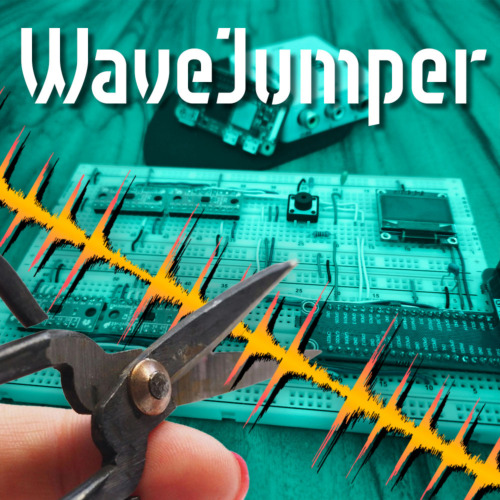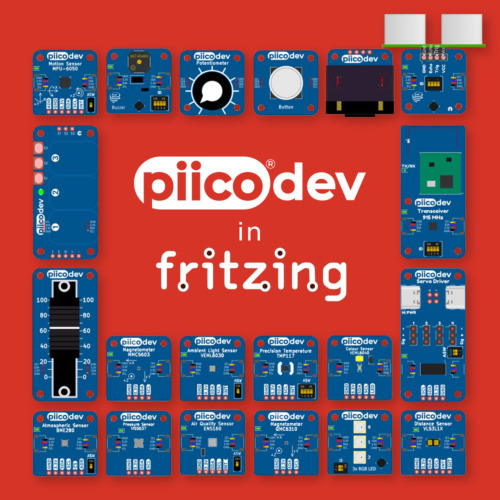Pololu I²C Isolator with Isolated Power and Connectors, ISO1640, MIE1W0505BGLVH, 5V/3.3V, 200mA
Available with a lead time
Expect dispatch between Dec 23 and Dec 26
Quantity Discounts:
- 10+ $15.54 (exc GST)
- 25+ $15.05 (exc GST)
 |
 |
This module enables galvanically isolated (electrically isolated), bidirectional communication between two I²C devices while providing isolated and regulated 5 V or 3.3 V power at up to 200 mA. This isolation means that incorrect connections or bad voltages on one side cannot propagate through to damage the device connected to other side. The signal isolation is achieved with the TI ISO1640B, which supports bidirectional data transfer up to 1.7 MHz. See the ISO1640BDR datasheet for more information.
The isolated power transfer is achieved with the MPS MIE1W0505BGLVH. The output ground (GND2) is effectively independent of the input side, which can be useful for preventing ground loops and avoiding ground currents that can cause unpredictable system behavior or even lead to destruction. See the MIE1W0505BGLVH datasheet (624k pdf) for more information.
Here are some of the module’s key features:
- Galvanic isolation between the two sides
- Bidirectional SDA and SCL for bidirectional I²C communication with support for clock stretching
- 3 V to 5.5 V input voltage range
- Selectable 5 V or 3.3 V regulated output (5 V default)
- up to 180 mA out continuous (200 mA peak) at 5 V in
- up to 75 mA out continuous at 3 V in
- Over-temperature and short-circuit protection
- Compact 0.5" × 0.6" size with breadboard-compatible, 0.1"-pitch through holes
- Available with JST SH-style 4-pin connectors that are compatible with Qwiic and Stemma QT or without connectors
Details for item #5393
This is the version with JST SH-style 4-pin connectors.
Using the module
 |
Pinout of the Pololu I²C Isolator with Isolated Power and Connectors, ISO1640, MIE1W0505BGLVH (top and bottom views). |
|---|
Input power is supplied across VCCIN and GND1 and output power is delivered across VCCOUT and GND2. The two sides are galvanically isolated (GND1 is NOT connected to GND2). Note that the efficiency of the regulator is less than 50%, so the input power will need to be at least twice the output power.
| VCCIN range | VCCOUT | Output current |
|---|---|---|
| 4.5 V to 5.5 V | 5 V (default) or 3.3 V (selectable) | 180 mA continuous, 200 mA peak |
| 3 V to 3.6 V | 3.3 V | 75 mA continuous |
SDA1 and SCL1 connect to the I²C data and clock signals of one device while SDA2 and SCL2 connect to the I²C data and clock signals of the other. Both the SDA and SCL connections are bidirectional, which allows for clock stretching. There are 10k pull-up resistors from SDA1 and SCL1 to VCC1 and from SDA2 and SCL2 to VCC2; for high-speed communication, external pull-up resistors can be added in parallel as necessary to make the pull-ups stronger.
The enable input, EN, is pulled up to VCCIN through a 100 kO resistor, which enables the power transfer to the VCCOUT side by default. This pin can be driven low to disable the module and put it into a low-power state (note that the input side of the ISO1640 is not powered down).
The output voltage selection pin, VSEL, is floating, which sets the output voltage to 5 V by default. To select 3.3 V for the output voltage, connect VSEL to GND2. This can be done using the board’s through holes (the left picture below shows an example of this with male headers and a shorting block) or by adding an SMT jumper to the pads circled in the right picture below. Note: Do not change VSEL while the regulator is powered.
|
|
Pololu manufacture these boards in-house at Pololu's Las Vegas facility, so Pololu can make these modules with the jumper installed for 3.3 V output. Please contact us if you are interested in this customization.
Schematic
 |
Isolation/clearance considerations
Although the ISO1640 IC has an isolation rating of up to 3 kVRMS and the MIE1W0505BGLVH IC has an isolation rating up to 2.5 kVRMS, please note that the board is made to be compact, and the tightest clearance (2 mm) is smaller than clearances of the IC packages (4mm for the ISO1640 and 3.5 mm for the MIE1W0505BGLVH). The picture below shows the regions of tightest clearance (the larger pads are just structural pads for the connectors and are not electrically connected to anything):
 |
The tightest clearance on the Pololu I²C Isolator with Isolated Power is between these sets of pads, which are 2 mm apart. |
|---|
Dimensions
| Size: | 0.5" × 0.6" × 0.28" |
|---|---|
| Weight: | 0.7 g |
General specifications
| Minimum operating voltage: | 3.0 V |
|---|---|
| Maximum operating voltage: | 5.5 V |
| Maximum output current: | 200 mA |
| Output voltage: | 5 V1 |
| Reverse voltage protection?: | N |
| Connectors?: | Y |
| Isolated power transfer?: | Y |
Identifying markings
| PCB dev codes: | iso03a |
|---|---|
| Other PCB markings: | 0J15307 |
Notes:
File downloads
-
3D model of the Pololu I²C Isolator with Isolated Power, ISO1640, MIE1W0505BGLVH, 5V/3.3V, 200mA (5MB step)
-
Drill guide for the Pololu I²C Isolator with Isolated Power, ISO1640, MIE1W0505BGLVH, 5V/3.3V, 200mA (15k dxf)
This DXF drawing shows the locations of all of the board’s holes.
-
MPS MIE1W0505BGLVH datasheet (624k pdf)
Recommended links
-
MPS product page for the MIE1W0505BGLVH 5V, 1W, Regulated, 2.5kVRMS Isolated DC/DC Module
MPS product page for the MIE1W0505BGLVH, where you can find application notes and other resources.
Exact shipping can be calculated on the view cart page (no login required).
Products that weigh more than 0.5 KG may cost more than what's shown (for example, test equipment, machines, >500mL liquids, etc).
We deliver Australia-wide with these options (depends on the final destination - you can get a quote on the view cart page):
- $3+ for Stamped Mail (typically 10+ business days, not tracked, only available on selected small items)
- $7+ for Standard Post (typically 6+ business days, tracked)
- $11+ for Express Post (typically 2+ business days, tracked)
- Pickup - Free! Only available to customers who live in the Newcastle region (must order online and only pickup after we email to notify you the order is ready). Orders placed after 2PM may not be ready until the following business day.
Non-metro addresses in WA, NT, SA & TAS can take 2+ days in addition to the above information.
Some batteries (such as LiPo) can't be shipped by Air. During checkout, Express Post and International Methods will not be an option if you have that type of battery in your shopping cart.
International Orders - the following rates are for New Zealand and will vary for other countries:
- $12+ for Pack and Track (3+ days, tracked)
- $16+ for Express International (2-5 days, tracked)
If you order lots of gear, the postage amount will increase based on the weight of your order.
Our physical address (here's a PDF which includes other key business details):
40 Aruma Place
Cardiff
NSW, 2285
Australia
Take a look at our customer service page if you have other questions such as "do we do purchase orders" (yes!) or "are prices GST inclusive" (yes they are!). We're here to help - get in touch with us to talk shop.
Have a product question? We're here to help!
Guides
The Maker Revolution
Projects
Pico-Dog Motion Activated Audio Alarm
WaveJumper: Music Sample Slicer on a Breadboard
PiicoDev Ecosystem In Fritzing
Makers love reviews as much as you do, please follow this link to review the products you have purchased.


















Product Comments